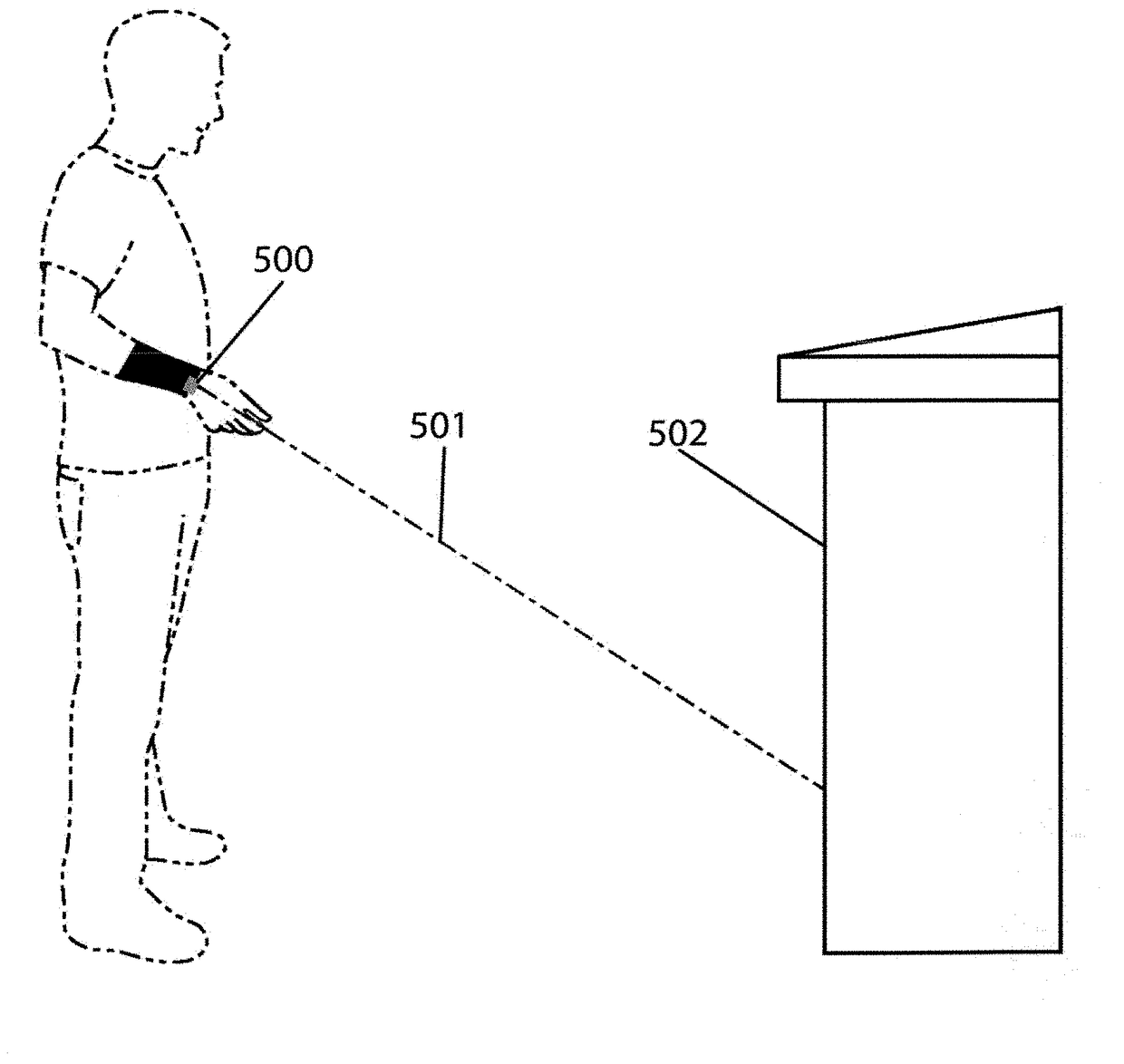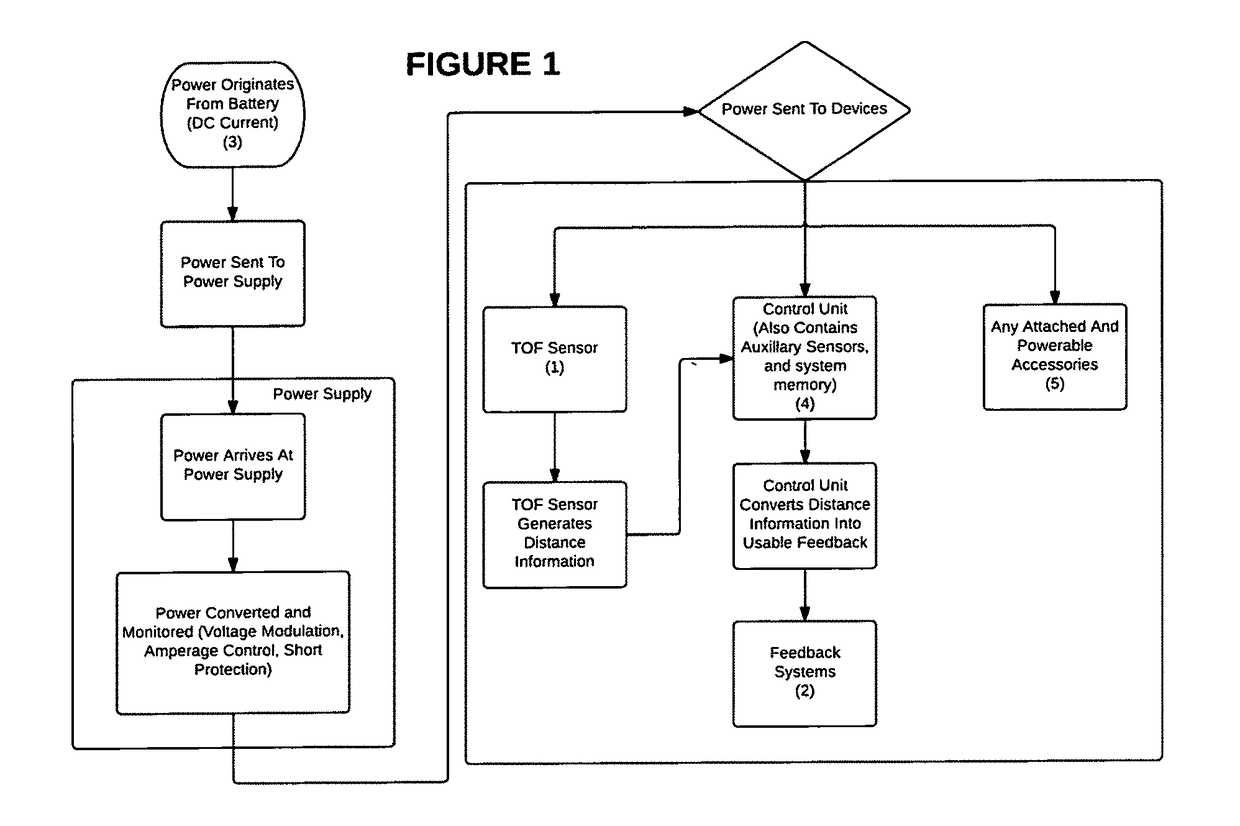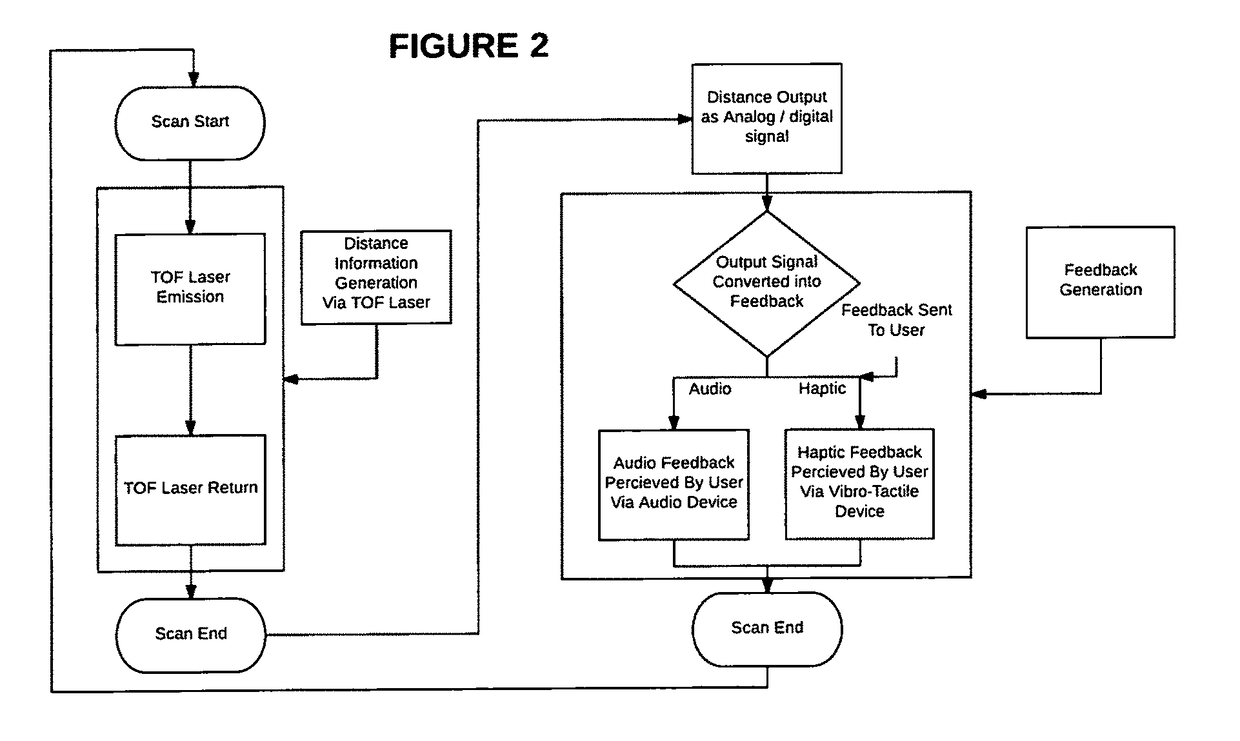Non-visual precision spatial awareness device.
a non-visual, spatial awareness technology, applied in the direction of distance measurement, instruments, using reradiation, etc., to achieve the effect of improving location accuracy, quick development of 360 degree spatial awareness, and quick navigation
- Summary
- Abstract
- Description
- Claims
- Application Information
AI Technical Summary
Benefits of technology
Problems solved by technology
Method used
Image
Examples
Embodiment Construction
[0028]The “Spatial Recognition Device” or “SRD” means a device that provides a visually impaired user with the ability perceive and establish real-time, high precision and resolution awareness of objects and obstacles in their surroundings. It can enable the user to not merely navigate, but also develop spatial awareness of their environment so that appreciate detailed location and topological features. It can also incorporate other sensors, such as but not limited to accelerometers, GPS, Bluetooth (low energy “LE” Bluetooth) or ANT+beacons, and data processing elements (GIS, topology calculation, storage and analysis), and audio (tone / speech) or haptic feedbacks to aid the user maintaining ultraprecision location and navigation, and self-generated mapping and alerting and location of objects and obstacles. The SRD preferably is mounted to the user's wrist, arm, or head through a lightweight mounting system.
[0029]In FIG. 1, shows the power chain for an example of the most basic embo...
PUM
 Login to View More
Login to View More Abstract
Description
Claims
Application Information
 Login to View More
Login to View More - R&D
- Intellectual Property
- Life Sciences
- Materials
- Tech Scout
- Unparalleled Data Quality
- Higher Quality Content
- 60% Fewer Hallucinations
Browse by: Latest US Patents, China's latest patents, Technical Efficacy Thesaurus, Application Domain, Technology Topic, Popular Technical Reports.
© 2025 PatSnap. All rights reserved.Legal|Privacy policy|Modern Slavery Act Transparency Statement|Sitemap|About US| Contact US: help@patsnap.com



